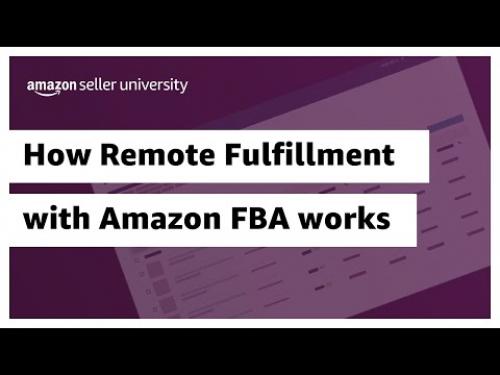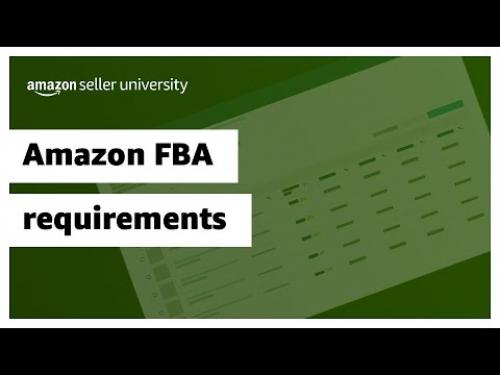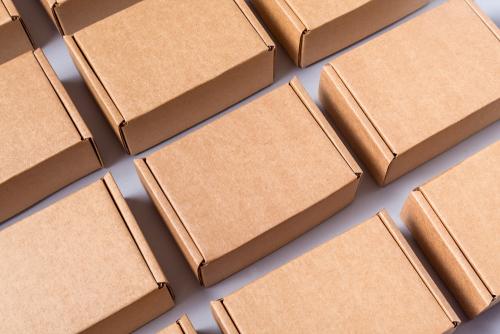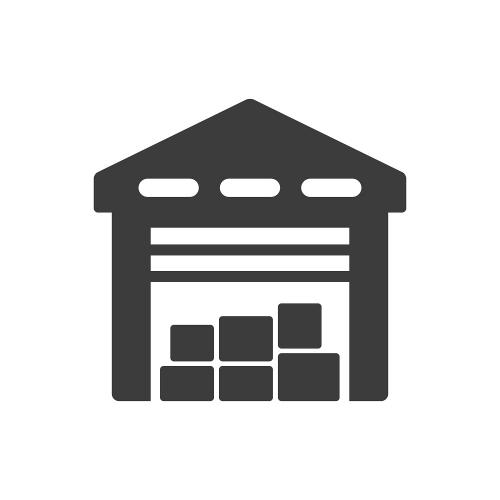How to Use Amazon FBM to Strengthen Your Amazon.. What is Amazon FBM?
- How to Use Amazon FBM to Strengthen Your Amazon.. What is Amazon FBM?
- Amazon FBM sign up. How Does Amazon FBM Work?
- Amazon FBM dropshipping. What is dropshipping?
- Amazon FBA. Looking to save time and reduce costs on inventory storage, order management, shipping, customer service, and other steps of ecommerce fulfillment? Here’s how to use Fulfillment by Amazon to launch or scale your business
- Amazon FBM shipping rates. Amazon FBA vs FBM? What’s the Difference and What to Expect
- Amazon FBM shipping labels. How to Ship Directly to Amazon FBA
- Amazon FBA and FBM Difference. FBA vs FBM: Which One is The Best In 2023?
How to Use Amazon FBM to Strengthen Your Amazon.. What is Amazon FBM?
As we briefly mentioned above, when sellers enroll in FBA, they immediately pass the order-fulfillment buck to Amazon from start to finish. This involves: sourcing, packing and shipping.
Which allows brands to only source and sell products.
In contrast, FBM sellers take charge of supply, logistics and delivery.
The Amazon FBM program focuses on brand independence. So, instead of paying service fees, you can use your own resources to source, sell, and deliver products to customers.
That means more work, of course. But in return, you take charge of the entire sales funnel, with almost no reliance on Amazon.
Top sellers use cutting-edge advertising tools
Perpetua offers the most advanced Amazon PPC solution on the market, with all the tools, resources, and expert support you need to build successful campaigns for your products. And what’s more, it couldn’t be easier to get started. Request a free demo today to discover the industry’s premier optimization and intelligence software for Amazon Ads.
Here are some of the perks that come from selling on Amazon FBM:
Low costs
33% of FBM sellers earn over $25,000 in monthly profits. This is in contrast to 26% who do so under FBA, according to .
The reason behind this relies on the fact that FBM sellers don’t need to pay Amazon fees to ship, pack and deliver products.
For example, if you sell heavy and bulky products, there’s no need to pay any oversize fees. So, you’ll generate bigger profit margins from sales.
Stock Management
FBM sellers do not rely on Amazon’s warehouses to manage inventory. This has a few advantages:
You can handle returned items and assess the damage to a product. Thus, you can determine what happened, and set a proper course of action with the customer.
All products in storage are your own. So, you won’t need to worry about confusing shipments and delivering the wrong products to customers.
Improved Packaging
Since FBM sellers control the fulfillment process, they can oversee product packaging. So, FBM brands can decide how to store products for better protection.
Plus, they can also pack them in a way that minimizes damage during delivery.
In short, you’ll take full charge of quality control and protect your branding. This way, you can reduce mistakes and boost customer delight.
Customer Service
Althoughfeatures great customer service, it sometimes lacks that personal touch.
Amazon FBM puts sellers in direct contact with customers. It’s an opportunity to deliver a unique shopping experience.
Since you know the ins and outs of your product, there’s no one better to answer customer queries than yourself. In return, you’ll get better feedback, and improve your seller ratings.
Top sellers use cutting-edge advertising tools
Perpetua offers the most advanced Amazon PPC solution on the market, with all the tools, resources, and expert support you need to build successful campaigns for your products. And what’s more, it couldn’t be easier to get started. Request a free demo today to discover the industry’s premier optimization and intelligence software for Amazon Ads.
Amazon Policy Protection
FBA sellers must follow Amazon's policies and pricing at all times. That includes compliance with policy changes that may affect their operations.
FBM sellers need not worry about that. So, they have more leeway, less paperwork, and no unexpected costs.
Immediate Sales
Amazon FBM brands can start selling as soon as they list products in the marketplace.
FBA brands must wait for their products to reach the warehouse before they can sell. FBM brands don’t have that setback.
How to Use Amazon FBM to Strengthen Your Amazon Business
When it comes to selling on Amazon, there are two main options: Fulfillment by Amazon (FBA) and Fulfillment by Merchant (FBM). In this article, we'll explore the benefits of using FBM to strengthen your Amazon business.
What is Amazon FBM?
FBM is a program that allows sellers to take charge of their own inventory management, shipping, and customer service. This means that instead of relying on Amazon's warehouses and logistics, you'll be responsible for sourcing, packing, and shipping your products to customers.
Benefits of Amazon FBM
So, what are the benefits of using FBM? For one, you'll have more control over your business. You'll be able to source and sell products without having to rely on Amazon's inventory management system. This can be especially beneficial for sellers who have unique or bulky products that are difficult to manage through Amazon's warehouses.
Another benefit of FBM is that you won't have to pay Amazon's service fees for shipping and handling. This can be a significant cost savings, especially for sellers who sell heavy or bulky products. With FBM, you'll be able to keep 100% of your profit from each sale, rather than having to share it with Amazon.
FBM also gives you more control over customer service. You'll be able to handle returns and damaged products directly, which can help to improve customer satisfaction and reduce the risk of negative reviews.
Success with FBM
According to a recent study, 33% of FBM sellers earn over $25,000 in monthly profits. This is in contrast to 26% of FBA sellers, who also earn over $25,000 in monthly profits. The main reason for this difference is that FBM sellers don't have to pay Amazon's service fees, which can be a significant expense for sellers who use FBA.
Conclusion
In conclusion, using FBM can be a great way to strengthen your Amazon business. With more control over your inventory management, shipping, and customer service, you'll be able to keep more of your profit from each sale and build a more sustainable business. So, if you're considering using FBM, we hope this article has given you a good understanding of the benefits and advantages of this program.
Amazon FBM sign up. How Does Amazon FBM Work?
Amazon FBM puts the seller in charge of order fulfillment. Here’s a high-level overview of how FBM works :
- You sign up for a seller account on Amazon.
- You create an Amazon product listing or sell under an existing one.
- Customers order your products on Amazon.
- You pack and ship the products to your customers.
- You handle customer service and returns when they occur.
To start with FBM, you’ll need to create an account on Amazon. You can either sign up as an individual or as a professional seller. Individual sellers don’t pay a subscription fee, but Amazon charges a $0.99 fee for each item sold.
Professional sellers pay a subscription fee of $39.99 a month , but there are no per item selling fees. All sellers pay a commission, also known as a referral fee, on product sales.
Once you sign up for an Amazon seller account and submit the necessary documents, Amazon takes anywhere from a few minutes to a week to approve your account .
Once approved, you can create product listings and set the return policy for your products. Make sure you optimize your product listings to rank on Amazon .
Feel free to read my article on Amazon SEO to understand how the Amazon search algorithm works. It’ll help you rank higher in the search results and improve your conversion rate .
After your products go live, Amazon will notify you when you receive an order . At that stage, you can use either Amazon or your own shipping carrier to create shipping labels and ship your order.
In general, using an Amazon partner carrier will be the cheapest way to ship a package . If everything goes well , your customer will receive the product on time, and you’ll get your payment within 14 days.
If the customer requests a return, you must respond to their request within 24 hours and process the return order within 48 hours. If you fail to do so, Amazon may initiate a refund on your behalf and bill your seller account for the shipping fees.
You can read more on Amazon’s return policy to understand exactly how it works.
Amazon FBM dropshipping. What is dropshipping?
is when a seller lists a product for sale online and has it shipped from a supplier or manufacturer without purchasing any inventory upfront. Dropshipping is a popular business model with Amazon, eBay , and Shopify sellers, as it is easy to get started, and you don’t need a significant upfront investment.
While sellers drop ship products on Amazon, there are strict guidelines you must follow, or Amazon will suspend your account. For example, Amazon prohibits sellers from dropshipping orders from other retailers such as Walmart.
Sellers must be identified on all invoices, packing slips, and external packaging — without any mention of the supplier or manufacturer that shipped the product.
Pros and cons of dropshipping
Many new ecommerce entrepreneurs are attracted to this business model because you don’t need much money to start. Still, there are a few things you need to consider when deciding if you should go into dropshipping or not. Let’s go over the pros and cons.
Pros of Dropshipping
- Low costs . Low startup costs compared to other business models such as private label or wholesale — no ordering products in bulk and spending thousands of dollars upfront.
- Low barriers to entry . It is easier to get started, as you can find products from a supplier and list them on Amazon (or another platform) immediately .
- Amazon allows sellers to dropship but be sure to follow their dropship policy .
Cons of Dropshipping
- High competition . Since it is much easier to start dropshipping, there is also much more competition.
- Slow delivery . You may experience slow delivery times depending on the supplier or manufacturer you’re working with.
- Lack of quality control . Since the products you’re selling will be shipped directly from the manufacturer or supplier, there is no way for you to control the quality of the product. We suggest ordering samples from your supplier before deciding to use them.
Amazon FBA. Looking to save time and reduce costs on inventory storage, order management, shipping, customer service, and other steps of ecommerce fulfillment? Here’s how to use Fulfillment by Amazon to launch or scale your business
can help you optimize and streamline your operations and reach a wider audience. Whether you’re new to selling online or an experienced seller, in this guide, we’ll walk you through how FBA works and how you can use it to grow sales.
What is FBA?
Fulfillment by Amazon is a program that helps Amazon sellers outsource fulfillment processes to Amazon. You can enroll inventory in FBA to store products in Amazon fulfillment centers. When customers place orders, Amazon can pack, ship, and provide customer service for the FBA items.
When you list products with FBA, the listings for qualified offers can display the Prime badge, letting customers know they’re eligible for free, two-day shipping. Here are some more perks:
- Using FBA for shipment costs 32% less per unit on average compared to alternatives
- FBA is a flexible program, letting you enroll as many (or as few) products as you’d like—you can even start with as little as one product
- Amazon’s customer service team can handle customer inquiries and process returns at no additional charge
FBA also has tools and sub-programs to optimize your operations and meet specific business goals, such asRemote Fulfillment with FBA, which lets you fulfill orders in other countries with inventory in the United States. Another example is, which lets you ship inventory directly from China to the U.S. and European fulfillment centers with competitive rates.
Learn how remote fulfillment with Amazon FBA works

Watch
Learn how remote fulfillment with Amazon FBA works
Learn how the Remote Fulfillment with Fulfillment by Amazon (FBA) program works. In this module, you’ll learn the benefits of the Remote Fulfillment with FBA program; how to determine if you and your products are eligible; and how to manage program, per-sale, and import fees.
How Amazon FBA works: 6 steps
Let’s cover how to use FBA to meet your business goals—from enrolling products to sending in your first shipment.
Did you know?
New FBA sellers can qualify for an array of incentives
New-to-Amazon sellers with acan receive $100 in inventory shipping fee credits for the Amazon Partnered Carrier program, or $200 in fulfillment fee credits for Amazon Global Logistics. New sellers can also get free monthly storage, liquidations, and return processing for eligible products through FBA New Selection .
Step 1: Decide on a fulfillment strategy
You can use FBA to fulfill all the products you sell, or some of them, depending on your needs. You can even use FBA to fulfill orders from your other sales channels, such as your own website. Learn more aboutand connect to your channels with pre-built applications or directly through APIs for order automation.
Step 2: Add products to FBA
Option 1: When adding new inventory, select “Amazon will ship and provide customer service (FBA)” in the “Offer” tab.
Option 2: If you’ve already added products and want to convert them to FBA, hover over Inventory in the Seller Central main menu and select “Manage Inventory.” Click the “Edit” drop-down menu to the right of any product you’d like to fulfill through Amazon and choose “Change to Fulfilled by Amazon.”
Whenever you add or convert products to FBA, be sure to double check you’ve entered product dimensions correctly to help avoid inventory issues down the road.
Step 3: Prep and pack products
To ensure a smooth check-in at Amazon fulfillment centers, be sure to followand have these items handy when relevant:
- Ship-from address
- Product measurements
- Case sizes
- Boxes to ship the items in
- Poly bags and bubble wrap
- Shipping scale
- Printer for labels
- Avery 5160 or 8160 paper to print Amazon barcodes’
Amazon FBA packaging, prep, and labelling requirements

Watch
Amazon FBA packaging, prep, and labelling requirements
Learn about the different requirements for Amazon FBA inventory, including barcode requirements, inventory requirements, packaging requirements, and labelling requirements.
Amazon FBM shipping rates. Amazon FBA vs FBM? What’s the Difference and What to Expect
What’s better, Amazon FBM or FBA?
It’s no secret that Amazon’s FBA platform is perhaps the most streamlined and effective way to own an online business. Virtually anyone can utilize the platform with millions of shoppers per month , generating over $125 billion in revenue per quarter, and slice themselves a piece of that pie. Amazon’s ability to store, fulfill, and ship products all over the world are unprecedented and available to any seller wanting to seize the e-commerce experience.
But it comes with a price. Taking about 15% of each sale PLUS a fulfillment fee can, and will, cut into profits. Is that price worth the ease that comes with utilizing FBA? Usually, it is!
Are there instances when FBA just isn’t the slice of the pie that tastes best? Absolutely.
The average Amazon shopper doesn’t tend to take notice of whether a product is Fulfilled by Amazon or Fulfilled by Merchant (FBM). Sometimes a slightly slower shipping speed and lack of a Prime badge catch their attention, but not always. It’s not until the customer has a return request, or a damaged item delivered, that Fulfilled by Merchant becomes any different in the customer experience.
So, is FBM ever a more ideal solution than FBA?
Let’s break it down.

- Large and oversized products . Do you have a product that falls into anything larger than the large – standard size product tier? It’s worth looking into FBM. Large and oversized products have much higher FBA fees (while keeping that referral fee the same).
Doing some math might help. Compare your total shipping costs (packaging and Buy Shipping prices) to the FBA fee. You might see a big difference.
Not Sure What Size Tier Your Product Falls Into?
- Small moving quantities . Is your product moving a little slow? Racking up some Amazon storage fees? Or maybe it’s a higher ticket item and you’re moving just a few a day (or less). FBM might be a good consideration, saving you money on storage fees (if you can store at home), and possibly fulfillment fees.
- Launching and dealing with an Amazon storage limit? Launches can cut into inventory pretty quickly, and that leeway time between restocking inventory to Amazon and Amazon checking it in can be the dividing line between ranking on page one and never being seen.
FBM works great if you want to keep some inventory home for your launch and not waste your Amazon inventory on launching. - Personal connection . If you’re looking for a way to connect more personally with your customer, FBM is the way. You have more control over the packaging, shipping, and handling of your product. If this is important to you, FBM may be a great option.
Reasons Not to Use Amazon FBM?

- You don’t have a place to store your product . FBM may sound enticing in order to avoid some of Amazon’s fees, but make sure you have the storage space readily available.
- Time constraints . Normally, orders from Amazon need to be fulfilled within two days, meaning that you will need to ship almost every day. This can be time-consuming, especially if your e-commerce business is a passive hustle.
Meeting package pick-up times from your USPS or UPS carriers is no easy task each and every day. However, you could take advantage of third-party fulfillment services from other warehouses. These are companies dedicated to handling your logistical and supply chain operations. Keep in mind, they will charge fulfillment costs as well, but if you need an assist with storage and shipping, 3PL companies are definitely worth looking into.
Want to learn more about when to use a 3PL for your online business? We’ve assembled the 3PL essentials for you here . - Extra costs . A small variety of equipment is needed for self-fulfillments, such as a thermal label printer, thermal labels, and other packaging supplies.
- Customer service . I mentioned above that once a customer purchases an item from Amazon using Fulfilled by Merchant, the customer service is also in that merchant’s hands. Amazon’s policies declare that vendors must match Amazon’s return, customer satisfaction, and timeliness when it comes to customer service. This means you, as the seller, are responsible for all returns, buyer messages, refunds, and addressing concerns.
- And finally, no Prime badge . There was, and maybe will be again, a program called Seller Fulfilled Prime, where sellers could “prove” their Prime fulfillment capabilities and earn a Prime badge for their products. This program has since been put on “waitlist only,” though some sellers have been grandfathered in. The policies are stringent, and a nearly impeccable shipping record needs to be maintained.
Don’t fret, though. FBM products can still offer free 2-day shipping, or any free shipping speed you’d like.
Amazon FBM shipping labels. How to Ship Directly to Amazon FBA
After doing product research, finding a winning product, and working with a supplier to create a private label product , (FBA) sellers have the option to ship their products straight to Amazon’s warehouses from their supplier or to ship them to another location first, before they go to Amazon.
Why wouldn’t sellers have their suppliers send their inventory straight to Amazon? Some sellers like to inspect the products themselves, only send a limited quantity of stock to Amazon at a time to control , or any number of other reasons.
Sellers who go this route need to know how to get their products to Amazon’s warehouses when they’re ready. So, how do you set up an FBA shipment to get your inventory into an Amazon warehouse?
- Save time creating shipments with simplified process steps.
- Create reusable case pack templates to provide box content information, box weight and dimensions, and prep and labeling details for shipments of single-SKU boxes. The templates are ideal when you use the same box configuration for a SKU because you won’t have to re-enter the details each time you replenish inventory.
- Pack single-SKU and mixed-SKU boxes before you create shipments, and update quantities as you pack, before you confirm your shipment destinations.
- Choose the best option to ship your inventory as individual boxes ( small parcel delivery ) or pallets ( less than truckload delivery ).
For a brand new Amazon seller , navigating Seller Central and setting up your first FBA shipment can be a difficult task.
If you sell , , or and plan to fulfill your orders with FBA, follow along, because we’ll go over every step of how to set your FBA shipment up correctly.
Want to learn more about selling on Amazon? Check out our complete guide.
How to Sell on Amazon
Create an FBA shipment using “Send to Amazon”
Before Send to Amazon, there was an old way of creating a shipment in Seller Central. That way is now gone and all sellers must use the new Send to Amazon shipment creation workflow.
Send to Amazon requires fewer steps for replenishing FBA inventory. , here is what you can do with Send to Amazon:
Compare estimated carrier fees to make the best choice between shipping your inventory as individual boxes ( ) or pallets ( ).
Step 1
First, find the product you want to ship inventory for in the “Manage All Inventory” section of Seller Central.
You can also click on “Shipment” to go to your shipping queue and create a new shipment.
Find your product, then on the right-hand side, choose the drop-down menu that reads “Edit” and click “Send/Replenish Inventory.”
Step 2
If you already have a workflow created for that product, it will show up here. If not, you will enter new packing details of the product, including how many units per box, the dimensions, and package weight.
You will be able to name your template as well. This allows you to choose the same exact packing details for the next shipment you send to Amazon, thus making the process easier.
If for whatever reason, you will be packing your product differently for the next shipment, you can create a new template.
Next, choose the number of units you want to send. Once that is entered, click Ready to Send, then Confirm and continue.
In here, you can also edit your “Ship from” address. Once you’re done here, go to the “Confirm Shipping” step in the workflow.
Step 3
Confirm your shipping information and accept the charges.
Choose your ship date, shipping mode (small parcel delivery or LTL), confirm your shipping carrier and charges. If everything looks good, click “Accept charges and confirm shipping.”
Step 4
Print your labels and ship! Once you print your shipping labels, again, make sure both barcodes are visible on the outside of your box. Then simply drop off your package at UPS or schedule a UPS pickup.
You will be able to track your shipment from the Shipping Queue.
How to ship your inventory from China directly to FBA
Amazon now has a program called that allows sellers to book ocean shipments right in Seller Central. This makes it much easier for sellers to get their inventory from their supplier in China, into Amazon’s fulfillment centers.
When creating your shipment in Send to Amazon, if you enter a ship from address from outside your marketplace country, an option for Global Logistics will pop up.
Enter your packing details based on how your supplier will be shipping your units and enter that into your shipment workflow.
You can choose from your current template or create a new one based on your supplier.
After filling out your packing details, you can get different quotes from shipping companies within Send to Amazon. If you find a quote that works for your business, confirm shipping.
In the last step, you will enter customs information.
Amazon FBA and FBM Difference. FBA vs FBM: Which One is The Best In 2023?
Well, when you buy courses using links on our website, we may earn a tiny commission — at no extra cost to you. None Whatsoever! This helps us keep curating helpful content
Amazon FBA vs FBM — Which one should I choose? If this is the question bugging you — I’m here to help.
There was a case study done in the year 2021 where they found nearly three million active sellers on Amazon. What’s more, as per the State of Seller Report of Jungle Scout, it is evident all Amazon sellers have different methods of selling on Amazon.
The basic key difference betweenis the fulfilment methods they choose — Amazon FBA or FBM.
Let me be very honest; I use FBA and FBM, depending on what products I sell. No worries, this detailed comparison of — Amazon FBA vs FBM helps you decide which one is better for you.
So let’s dive in with FBA vs FBM.
Before rushing to any conclusion on which one is better, let me explain the basic key takeaway in FBA vs FBM.
Amazon FBA is Amazon’s warehousing and fulfillment service provided for Amazon sellers. Well, I’m not going to emphasize more on FBA because I did a detailed guide on —
AMAZON FBA — infographics FBADaddy
It’s the most popular way to sell on Amazon, in which a seller (or the supplier of the seller) mainly sends thewarehouse. After that, Amazon stores all the inventory and then ships it directly to the customers when you get orders. Mostly Amazon uses the two-day shipping method to ship the products. What’s more, in FBA, Amazon also manages customer support.
All in all, I will say with FBA — the Amazon fulfillment center picks products, packs, ships, and even provides customer support as well. Everything is automated with FBA.
What Is FBM?
With the FBM selling method, the seller mainly lists all the products on Amazon. And the seller also manages — storage, support, shipping, and even customer support as well. With FBM, mainly sellers take the complete responsibility of.

With Fulfillment by Merchant, you have to ship the products using your logistics and manage other operational processes. Also, with FBM, sellers need to store products in their warehouses or even use third-party companies. FBM makes sense for those sellers looking to sell some specific items that are large and heavy, and it also doesn’t have a fast turnover.
Verdict: FBM and FBA models are different, and it depends on the size of the business. For example, the items in your catalog and your individual goals and business model.
The Key Takeaways: FBA vs FBM
Regardless of the bookish definition, let me introduce a few key differences which you can use to bifurcate between FBA and FBM. You will get to know some of the point black subtle differences between FBA and FBM.
Which Is Profitable: FBA vs FBM?
As per the reports, the FBM sellers tend to get more conversions whereas the FBA sellers have better margins.

- Around 33.5% of FBM sellers make money compared to 26.8% of FBA sellers.
- Around 37% of FBA sellers get better sales margins, over 20% versus the FBM sellers out there.
Now you have the idea of which is more profitable among FBA and FBM.
Which is Better for Selling Faster: FBA vs FBM?
In comparison to FBA sellers, the FBM sellers get started quickly.
- More than 51% of the FBM sellers took around five weeks to start selling on Amazon compared to the Amazon sellers.
- 29% of the FBM sellers saw the conversions and profit rolling in the first three months. At the same time, the FBA sellers tend to be 20% there.
Which Method is Flexible: FBA vs FBM?
FBA sellers mainly spend less on managing their business compared to FBM sellers.
- More than 20% of the FBM sellers invest around 40 hours weekly managing their Amazon business compared to the 16% of the Amazon sellers.
Source: Blog Reports.
When Should Sellers Choose FBA?
If you’re looking to get started with FBA, here’s the reason why you should get started with FBA.
FBA Is Better If You’re:
- For high volume sellers
- For the retailers preparing to drop the cost right to the lowest possible profit point.
Benefits of Choosing FBA:
Here are the Benefits of Choosing FBA
- FBA prioritizes sellers as they get the Buy Box, which is typically the best ideal situation for any product.
- The best part, Amazon takes care of customer service and shipping.
- All the retail operations are open 24/7.
- FBA serves a broader audience.
- With Amazon FBA, the conversion rates are even higher because Amazon takes care of everything.
When Should Sellers Choose Amazon FBM?
If you’re looking to get started with FBM, I have listed a few reasons for getting started with Amazon FBM.